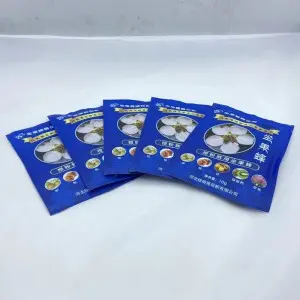Oct . 19, 2024 12:25 Back to list
The Importance of Pear Pollination in High-Quality Fruit Production and Ecosystem Health
The Role of Pear Pollination in High-Quality Fruit Production
Pollination is a critical process in the life cycle of flowering plants, influencing not only the quantity but also the quality of fruit produced. Pear trees, belonging to the genus Pyrus, rely heavily on pollination for successful fruit development. Understanding the intricate role of pollination in pear cultivation can help farmers and horticulturists maximize fruit quality, enhancing flavor, size, and marketability.
The Importance of Pollination for Pears
Pears are primarily cross-pollinated, meaning that pollen from one tree must fertilize the flowers of another for optimal fruit set. This is because most pear varieties are self-incompatible, with the exception of a few. This cross-pollination process involves various agents, predominantly bees, particularly honeybees, which are essential for transferring pollen between pear blossoms. In general, successful pollination results in the fertilization of ovules within the flower, leading to seed formation and subsequent fruit development.
The initiation of a pear’s fruiting process begins with the flower's reproductive cycle. During flowering, the petals open, revealing the anthers containing pollen. When bees visit a pear flower in search of nectar, some of the pollen from a previous flower gets transferred to the stigma of another flower. This transfer is crucial as it not only initiates fertilization but also impacts the overall health of the future fruit.
Factors Influencing Pollination Success
Several factors can influence the success of pollination in pear trees. The availability of pollinators is paramount; healthy bee colonies are essential for effective cross-pollination. Additionally, environmental conditions such as temperature, humidity, and wind can affect bee activity and, consequently, pollination rates. Cold or wet weather during the flowering period can limit bee foraging, reducing the likelihood of successful pollination.
Moreover, the choice of pear variety can impact the quality of pollination. Certain varieties are excellent pollen producers and can enhance the fruit set of other varieties when planted in proximity. For instance, the conference pear and the bartlett pear are often planted together to improve pollination success and fruit quality.
Impact of Pollination on Fruit Quality
high quality the role of pear pollination

High-quality pears are characterized by desirable traits such as flavor, texture, and size. One of the main benefits of effective pollination is the production of a higher number of seeds, which is directly linked to fruit quality. Pears that are well-pollinated tend to have a better flavor profile, more robust texture, and increased size. During the fruit development stage, hormonal signals from fertilized ovules influence the growth and development of the fruit. Consequently, adequate pollination ensures a proper hormonal balance, resulting in superior fruit quality.
Additionally, the uniformity of fruit size is often a direct reflection of successful pollination. Uniform fruit is more attractive to consumers, which is crucial in commercial pear production. Retailers and consumers alike prefer fruit that is consistent in size and shape, as it increases marketability. Therefore, effective pollination practices contribute significantly to the economic viability of pear growers.
Strategies to Enhance Pollination
To ensure high-quality fruit production, pear growers can implement several strategies to enhance pollination. One of the most effective methods is to promote habitat diversity by planting a variety of flowering plants around pear orchards. This not only attracts a wider range of pollinators but also supports their populations by providing food and nesting materials.
Additionally, beekeeping practices can be optimized to support pollination. Keeping bee hives in close proximity to orchards during the blooming season can significantly boost pollination rates. Offering supplemental feeding to honeybees during the early spring when flowers are budding can also increase their health and productivity.
Lastly, it is essential to monitor and assess the pollination success within orchards through fruit set surveys and field observations. This data can guide management practices and inform future planting strategies to enhance the quality of pear production.
Conclusion
In summary, the role of pollination in pear cultivation is vital for the production of high-quality fruit. Through the interaction of effective pollination agents, particularly bees, and strategies to enhance pollination success, growers can ensure that their pears exhibit exceptional flavor, size, and market appeal. By recognizing and addressing the importance of pollination, horticulturists can contribute to the sustainability and profitability of pear farming, ensuring that consumers enjoy the best quality fruit possible.
-
Pollen Peach Tree for Pure Pollination and High-Quality Peach Pollen
NewsJul.30,2025
-
Premium Cherry Pollen for Pure Pollination & Different Types
NewsJul.30,2025
-
Artificial Pollination Solutions for Various Plant Pollen Types
NewsJul.29,2025
-
Artificial Pollination Solutions for All Plant Pollen Types
NewsJul.29,2025
-
Premium Plant Pollen for Pure Pollination & Pollen Block Solutions
NewsJul.29,2025
-
Artificial Pollination Solutions for Efficient Crop Yields
NewsJul.28,2025